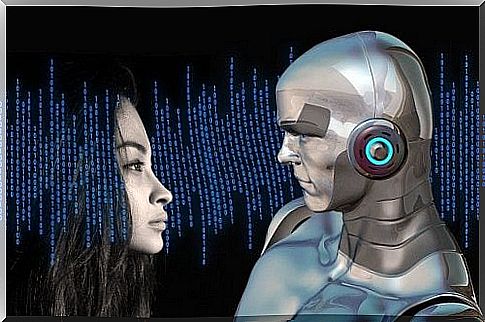Do You Know About The Uncanny Valley Concept?

” When computers take over, we can lose control. We survive by their whim. ” What do you think when you read this quote from Marvin Minsky, the father of artificial intelligence? Does it worry you? If the answer is yes, that feeling is justified, and according to the Uncanny Valley concept, it can be psychologically justified.
The current world is evolving at a furious pace. Any smartphone we carry in our pockets is more powerful than computers that took the first man to the moon. As is clear, all of this creates important progress, but it also raises some concerns. The speed at which technology is advancing is unimaginable.
What is the Uncanny Valley concept?
New technologies allow us to act in ways we could never have dreamed of many years ago. In fact, there are already completely artificial, animated robots and creatures that have a truly human appearance. If this kind of “being” worries you, this is no wonder. It’s a feeling that explains the Uncanny Valley theory.

According to Professor Masahiro Mori, who identified this concept in 1970, the more a robot looks like us, the more we will reject it if we are aware that it is a robot. But if we fail to distinguish a robot from a human, our response will be more positive. So it is a kind of “bump” or a “room” where we react to these beings with a very strong rejection.
Mori created this concept in 1970 while studying human reactions to robots. The idea of artificial intelligence and robots evoked the same response in men and women. Robots provoked a great rejection in both men and women, as shown in Pixar’s short film “Tin Toy” from 1988. The child in the story was too similar to the real child, but not so much that it led to a positive reaction.
Theories about Uncanny Valley
So far, no one has been able to explain why this rejection occurs. However, several researchers have proposed theories to try to answer this.
The most widely accepted theory is Thalia Wheatley, a psychologist at Dartmouth College. According to her , the brain has a stimulus evaluation system with programming that prevents us from choosing partners with health problems. This means that if we see someone or “something” that is not suitable for reproduction, our brain interprets it as a danger to the conservation of our species.
According to Wheatley’s research , human evolutionary history is so refined that we can detect very small distortions. When detected, these distortions cause discomfort around those who have physical or mental problems. This concern may explain the existence of the Uncanny Valley in the form of a natural response to the continuation of the species.

Criticism of the theory
This means that our brain can associate the appearance of an almost human, but not entirely human droid, with a being with a serious illness. Therefore, we have a negative reaction to it.
However, this logical theory also has its critics. Many robot specialists such as Ayse Saygin, a cognitive researcher at the University of California, pointed out that Android technology is not sufficiently developed yet.
This means that this theory has no scientific basis for confirming the Uncanny Valley theory. Therefore , the nasty feeling may be due to simple cognitive dissonance. By observing properties similar to human ones, such as facial expressions and behaviors, our brain creates certain expectations. When we are not happy, there is dissonance. This concept, whether true or not, introduces the possibility that we can learn more about how human empathy works.
What do you think? Do you feel restless when you see a machine that is too similar to a human? If so, you can agree with Mori and his concept. That’s disturbing, right?









